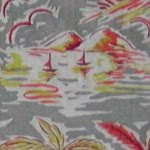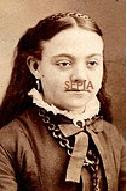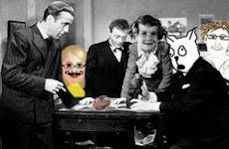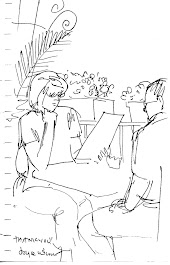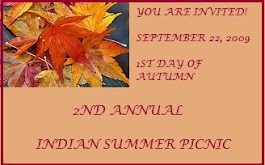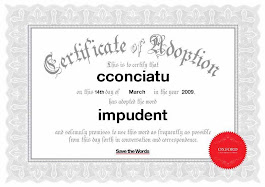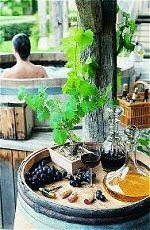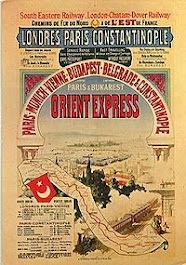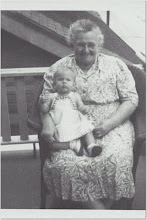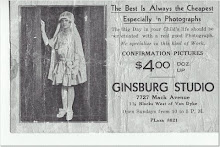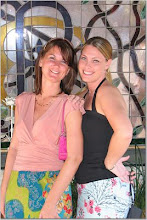Sunday, March 28, 2010
Friday, March 26, 2010
Postcard Friendship Friday - A Flour-y Tale

Dated November, 28, 1912, the Stratton Co. thanks Miss L. J. Gilmore for her order of flour and assures her it is will be shipped on the first railroad car to Hillsboro, New Hampshire, USA
Meanwhile, across the Big Pond and in the town of Hampshire, England, for which New Hampshire was named, this day in history, marks the beginning of the Tichbourne Dole. This local holiday, which began March 26, 1050, is still celebrated each year on the Feast of the Annunciation which is also known as Lady Day.
 The Tichbourne Dole by Gillis Van Tilborgh, 1671
The Tichbourne Dole by Gillis Van Tilborgh, 1671Each year, estate flour is milled and then blessed at the Tichbourne estate by the local priest. A gallon of flour is doled out to each adult resident of Hampshire and a half gallon is given to each child. It was the deathbed wish of Lady Mabella Tichbourne that a portion of produce from the estate be given to the poor each year. The story of the Tichbourne Family and the deathbed wish is filled with stories of impostors, intrigue, tragedy and even a curse! Read more here.
Flour has been around since the beginning of time and is a staple in every civilization whether it be made from local wheat, corn, barley, or just about any grain, root, or nut. The word flour comes from the Old French "fleur" which meant "blossom". Figuratively it also meant " the finest" as in the "blossom" of the crop. Show me a kitchen without flour, and I'll show you someone who has the car keys and a grocery list in their hand.
The price of cotton bottomed out in the United States in the early 1900's. It became cheap packaging material for flour, feed and other staples. The "waste not, want not" minded housewife saved the soft white material from the 25 pound bags and used it to make aprons, dishtowels, pillow cases, wash cloths, diapers, and even underwear for the family.
It was a difficult task, removing the label, and sometimes it remained. Stories made the rounds about the wife who left the "self rising" label on her husband's underwear and the young miss who tripped and fell, giving her suitor a glimpse of her knickers which read "Best in the Midwest".
It didn't take long for the dealers of sugar, flour and other staples to catch on to the use of the sack cloth. In order to notch up their sales they began dying the cotton sack material in solid colors.
During the depression, this material was as dear as the contents, and the sellers began dying patterns onto the cloth. Flour sack dresses became the fashion of the day. Repair, reuse and don't throw anything away was the motto of the times.
When father was ready to make a trip to town, whichever daughter was most in need of a new dress would accompany him and choose the design. Two bags? A matching dress for little sister.
Borders were available too. Perfect for aprons and pillow cases. Cotton flour sacks continued, especially in rural areas, into the 1960's.
Once paper and plastic packaging became cheaper and more efficient, those soft cotton flour sack dresses became of thing of the past.
Stop by and see Beth at The Best Hearts Are Crunchy for more Postcard Friendship Friday Fun!
Friday, March 19, 2010
Postcard Friendship Friday! You're Late!
This Day in History, March 19, 1918, Time zones were established and Daylight Saving Time was approved in the U.S. and its territories by Congress.
Our time is based on the Royal Observatory in Greenwich England which is called Greenwich Time and Universal Time. Daylight Saving Time was originally intended to save electricity during WWI. DST was repealed the following year but has been reinstated, repealed and extended several times due to war and energy crisis.
The history of standard time in the US actually began in 1883 when Canada and the United States agreed on a set of time zones necessitated by the railroad's need for set schedules.
Time, however was still very much a local issue. Not everyone adapted to the railroad times. Each town had a well known clock, perhaps at a bank or in a jewelers window by which watches and mantle clocks were set. Some states followed DST when it was in effect - others did not. Cities within states chose not to follow DST.
 In 1966, uniform time and Daylight Saving Time were mandated by law, States were allowed to exempt themselves from DST, and several did. Currently, however, the only states that have exempted themselves are Hawaii and Nevada,
In 1966, uniform time and Daylight Saving Time were mandated by law, States were allowed to exempt themselves from DST, and several did. Currently, however, the only states that have exempted themselves are Hawaii and Nevada,It was transportation and airlines that lobbied for uniform time and for this reason the US Department of Transportation (DOT) has authority over time zones and DST.
 Thanks for taking the TIME to stop by! Be sure and stop by Beth's The Best Hearts Are Crunchy for more Postcard Friendship Friday fun!
Thanks for taking the TIME to stop by! Be sure and stop by Beth's The Best Hearts Are Crunchy for more Postcard Friendship Friday fun!
Tuesday, March 16, 2010
On Marriage and Divorce - Who's Most Important Here?

A few years ago I was having lunch with several fellow employees and the owner of the company. Moments after lunch was served, Owner received a call from his Ex. The school had called to say Daughter was not feeling well. Ex was in the midst of filling an order of gift baskets, and needed Owner to pick Daughter up from school. After a short conversation - snippy and rude at our end - Owner whipped his car keys out of his pocket and asked for a carry out box for his lunch. He then looked at me- the only woman at the table - and said: "Now I ask you, who is more important here; me, the owner of a multi-million dollar company, or Ex, who makes $9.50 an hour filling gift basket orders?"
I knew the answer he wanted to hear. I knew him well enough to know his question was more of a dare than a request for advice. I knew an honest answer would cost me, and I knew no answer at all would probably cost the same. I chose not to answer. Just looked at him. Perhaps raised my eyebrows a bit. He never spoke to me again, and I was "laid off" a few weeks later.

I know it wasn't just my answer - or lack thereof -that cost me my job, but it sure didn't help. I wish now I had just told him the answer. It's very simple: Who is most important in the scenario? The daughter. The daughter. The daughter!
The issues that confuse most couples - or ex-couples - are these:
During a marriage, the most important in the relationship, other than God, of course, are the husband and wife. During and after a divorce, the most important people are the children.
Children, in-laws, family, pets, hair appointments - all come second to husband and wife. A relationship is not static. We change, our needs change, our attitudes change, our interests change, we mature - or not, we are needy - or not. Because neither we nor our relationship are static we must consider the marriage and each other as most important. Always. The relationship/marriage/husband and wife is the project of most interest, focus and importance. If this works and the marriage thrives and grows - everything else will work - or at least be endured.
During and after a divorce - when the marriage is determined to be non-repairable- the focus must change to the children. This is a subject that would take days or months to cover properly. In short, though, the importance of caring for the needs of the children/step children/adopted children, by not using them as pawns, not pitting them against one Ex or the other, not ignoring their needs, not burdening them with problems, keeping them properly informed, and letting them know they are most important in decisions is where all the energy of the parents should be expended.
This focus will resolve many other points of argument in the divorce: who gets the house, who gets the Corvette, who gets the every-day dishes. Look at these questions with the children in mind. The answers are easy. What is best for the children. House? Check. Corvette? Not so much. Everyday dishes? Of course.
If there are no children, have at it. If there are children, step away from yourselves and give them the focus they deserve. A bonus here is you will keep the respect of your family and friends. You will serve as a good example to others. You will be doing the right thing.
Labels:
children of divorce,
divorce,
marriage,
relationships
Friday, March 12, 2010
Postcard Friendship Friday! If It's Not Baroque, Don't Fix It
 Today In History: Today's postcard, from Russia (with love) shows the University of Moscow which was built by Mikhail Lomonosov with the encouragement of Elizabeth I, Empress of Russia. The University, said to be the oldest university in Russia was founded on March 12, 1755. If you say you are in the class of '99, the question would be: Was that 1799, 1899, or 1999?
Today In History: Today's postcard, from Russia (with love) shows the University of Moscow which was built by Mikhail Lomonosov with the encouragement of Elizabeth I, Empress of Russia. The University, said to be the oldest university in Russia was founded on March 12, 1755. If you say you are in the class of '99, the question would be: Was that 1799, 1899, or 1999?
 Elizabeth was the daughter of Peter the Great and followed in his footsteps by encouraging education, the arts and of couse the beautiful architecture, which is known as Elizabethan Baroque.
Elizabeth was the daughter of Peter the Great and followed in his footsteps by encouraging education, the arts and of couse the beautiful architecture, which is known as Elizabethan Baroque. The baroque style swept Europe during the 16th and 17th centuries. The word baroque probably comes from the Italian, barraco and is a term first used to describe the asymmetrical rough edged pearls. Baroque came to mean elaborate and profuse ornamentation. This style of architecture was promoted by the Council of Trent. The command was to build with a style of motion, shade and shadow and to elaborately display the wealth and stability of the Church while honoring God with a effusive display of art.
The baroque style swept Europe during the 16th and 17th centuries. The word baroque probably comes from the Italian, barraco and is a term first used to describe the asymmetrical rough edged pearls. Baroque came to mean elaborate and profuse ornamentation. This style of architecture was promoted by the Council of Trent. The command was to build with a style of motion, shade and shadow and to elaborately display the wealth and stability of the Church while honoring God with a effusive display of art. Elizabeth I's grandiose Winter Palace by architect Bartolomeo Rasterelli is an example of the Elizabethan baroque style.
Elizabeth I's grandiose Winter Palace by architect Bartolomeo Rasterelli is an example of the Elizabethan baroque style. The Sant'lvo Cathedral is a fine example of Spanish Baroque with it's beautiful corkscrew tower. The motion, shade and light of this style is very evident here.
The Sant'lvo Cathedral is a fine example of Spanish Baroque with it's beautiful corkscrew tower. The motion, shade and light of this style is very evident here.
Not surprisingly, England was not the least bit interested in what Europe was doing. It wasn't until Sir Christopher Wren designed St. Paul's Cathedral that the Brit's enjoyed their own version, known as the English baroque style.
While Europe and England raised these confections of wonder, the people of the New World were lucky to have a roof over their heads. One-room, rough hewn log cabins chinked with mud and plaster were the style of the day in the "suburbs". The more populated areas reveled in the Federal, Colonial and Cape Cod styles of architecture. Sturdy, staid and independent. Just like the new Americans.
 The Governor's house, in Williamsburgh Virginia, built by Wren, is known as Flemish Bond style.
The Governor's house, in Williamsburgh Virginia, built by Wren, is known as Flemish Bond style.
The brickwork shown above is an example of Flemish Bond.
So, as usual, I digress. We started in Russian confections, and ended up in a Williamsburg brick. On the way we found a beautiful baroque pearl necklace which, by the way, retails at about $7,900 but can be had on sale for a mere $2,999 if you hurry.
For more Postcard Friendship Friday fun, hurry over to Beth's at The Best Hearts Are Crunchy.
Friday, March 5, 2010
Postcard Friendship Friday - Orange You Glad It's Friday?

Today in History: Oranges were introduced to Hawaii in 1792. I wonder how that all turned out. Did the people of Hawaii enjoy their first taste of orange juice? Or, did they prefer Hi-C or the pasteurized orange juice with no pulp? One can only imagine, since I found no further information on the subject. My OJ preference is picking oranges, juicing them and then enjoying the freshest juice possible made from the blood orange tree right outside my door.

To celebrate the occasion, I found this lovely postcard dated March, 1907 and mailed from Tampa, Florida to Rochester NY. The Tampa address still exists, and is located right at the point where I-4 and I-275 meet in Tampa. The Rochester NY address also exists, and, looking at the satellite map, appears to be an apartment complex.
.
Bright, beautiful orange blossoms with their heady fragrance, would be right at home among the orchids and exotic flowers of the Hawaiian Islands. The fact that orange trees bloom while the previous year's crop of oranges are still at the peak of ripeness only adds to the beauty of the tree.
.
Orange blossoms are a sign of good fortune and new beginnings, and find their way into many wedding bouquets. It is also the State Flower of Florida.
.
The orange originated in southeast Asia, and is called a China apple in a number of languages.
.
The word for the orange, originated from a Sanskrit word which in part, means fragrant.
.
The color orange is named after the fruit.
.
Tea can be made from dried blossoms and from the leaves of the tree.
.
Orange water - like rose water is an ingredient in baked goods
.
Orange blossom honey - a delicious citrus flavored honey - comes from bee hives set out in orange orchards.
.
The entire orange - usually the Seville - is used in making orange marmalade. I make marmalade each year using blood oranges. The marmalade is much sweeter than the Seville type and has a darker, red orange color due to the red marbling of the oranges.
For more Postcard Friendship Friday fun, stop by and see Beth at The Best Hearts Are Crunchy. Beth will be hosting PFF this week.
Subscribe to:
Posts (Atom)





